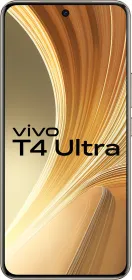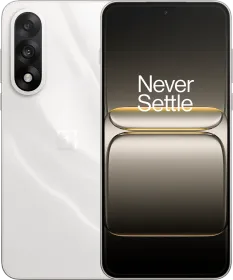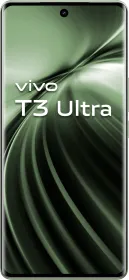Exynos 2500 vs. Snapdragon 8 Elite vs. Dimensity 9400
In the fiercely competitive world of mobile chipsets, the battle for supremacy continues to rage. While we’ve seen multiple flagships featuring the Snapdragon 8 Elite and the Dimensity 9400 (both of which perform well), a new contender has entered the market: the Samsung Exynos 2500.
While each of these chipsets is based on 3nm fabrication technology, they also promise unprecedented performance and advanced AI performance. This comparison examines the intricate details of their displays, CPUs, GPUs, NPUs, ISPs, memory, storage, and connectivity.
Exynos 2500 vs. Snapdragon 8 Elite vs. Dimensity 9400: Display

Samsung’s latest mobile chipset supports a 4K/WQUXGA screen up to a refresh rate of 120Hz.
Qualcomm’s Snapdragon 8 Elite provides on-device display support for 4K at 60Hz and QHD+ at 240Hz. Regarding external displays, the chipset can relay video in 8K at up to 30Hz and 1080p at 240Hz.
MediaTek’s Dimensity 9400 supports a WQHD+ screen at up to 180Hz. Further, it is the only chipset in the comparison that has a tri-port MIPI for handling tri-fold displays.
Also Read: Snapdragon 8s Gen 4 vs. Dimensity 9400e: Which One is Better?
Exynos 2500 vs. Snapdragon 8 Elite vs. Dimensity 9400: Fabrication Process

The Exynos 2500 utilizes Samsung’s 3nm Gate-All-Around (GAA) fabrication technology, which employs Fan-Out Wafer-Level Packaging (FOWLP). The manufacturing process makes the chip more power-efficient, reduces its thickness, and improves heat dissipation.
In contrast, both the Snapdragon 8 Elite and the Dimensity 9400 are built on TSMC’s N3E 3nm fabrication technology, which provides improved efficiency, enhanced performance, and higher yields.
Exynos 2500 vs. Snapdragon 8 Elite vs. Dimensity 9400: CPU

Unlike its competitors, the Samsung Exynos 2500 chipset has a 10-core CPU. It comprises a 3.3 GHz Cortex-X5 prime core, two 2.74 GHz Cortex-A725 performance cores, five 2.36 GHz Cortex-A725 balanced cores, and two 1.8 GHz Cortex-A520 efficient cores. That makes up for a 1+2+5+2 cluster design.
The Snapdragon 8 Elite is an octa-core chipset with a 2+6 core combination. While the chip has two 4.32 GHz Oryon prime cores, it features six 3.53 GHz Oryon Phoenix M performance cores, a configuration that is much different than its predecessor. The chipset prioritizes performance, which is also evident in the lack of balanced or efficient cores.
Like the Snapdragon 8 Elite, the Dimensity 9400 chipset also features an octa-core CPU. It contains a 3.63 GHz Cortex-X925 prime core, three 3.3 GHz Cortex-X4 performance cores, and four 2.4 GHz Cortex-A720 balanced cores. Per the official product page, the chipset also features a 12MB L3 cache and 10MB system-level cache. Moreover, the chip follows a 1+3+4 core architecture.
Between the three processors, the Snapdragon 8 Elite offers the highest CPU frequency, resulting in better scores in both the single-core and multi-core GeekBench 6 benchmark tests. The Dimensity 9400 comes in second, while the Exynos 2500 secured the third position (which is also echoed in the early benchmark scores).
Also Read: Snapdragon 8s Gen 4 vs. Dimensity 9400e: Which One is Better?
Exynos 2500 vs. Snapdragon 8 Elite vs. Dimensity 9400: GPU

As far as the GPU is concerned, the Exynos 2500 features the fourth-generation Xclipse 950 GPU enriched with AMD’s RDNA 3 architecture. To handle the demanding video games, the GPU provides hardware-accelerated ray tracing (which boosts frames per second by up to 28%).
The company has also adopted a two-shader engine structure, upgrading from 6WGP/4RB to 8WGP/8RB. “Unlock the type of graphics you get with a console in the palm of your hand,” mentions Samsung Semiconductor on the official product page. Early AnTuTu 10 listings suggest that the GPU scores around 90K points in the benchmark.
Qualcomm’s Snapdragon 8 Elite chipset features the Adreno 830 GPU (1.1 GHz clock speed), which provides hardware-accelerated ray tracing, support for Unreal Engine 5.3, Snapdragon Game Super Resolution 2.0, Adreno Frame Motion Engine 2.0, and HDR 10-bit gaming. On the AnTuTu 10 benchmark, the chipset scores around 116K points in the GPU department.
Based on ARM’s new 5th-generation architecture, the Immortalis-G925 MC12 GPU is said to offer PC-grade ray tracing for enhanced light and depth perception. MediaTek also equips the GPU with features like Adaptive Gaming Technology (MAGT 3.0), HyperEngine’s Super Resolution, opacity, and micromaps (OMM) for reduced rendering time. It’s worth mentioning that the graphics processor scores around 115K in the AnTuTu 10’s GPU section.
Also Read: Dimensity 9400e vs. Dimensity 9400: How Does MediaTek’s New Chipset Compare To The Flagship?
Moreover, the GPUs on the Snapdragon 8 Elite and the Dimensity 9400 offer similar performance: plenty for avid or professional gamers and more than what regular buyers can put to use. On the other hand, the Exynos 2500 still has some catching up to do with its rivals.
Exynos 2500 vs. Snapdragon 8 Elite vs. Dimensity 9400: NPU

The Exynos 2500 features an NPU, but Samsung hasn’t given it a name. On the official specifications page, the NPU is mentioned as the “AI Engine with 24K MAC NPU (2-GNPU + 2-SNPU) and DSP,” which sounds like an update from the Exynos 2400’s 17K MAC NPU.
Samsung claims that the NPU is capable of up to 59 TOPS (Trillion Operations Per Second), which is 39% more than the Exynos 2400’s NPU. It also enhances vector engine efficiency for accelerating generative AI models. However, there’s no mention of Agentic AI compatibility or support.
Writer’s Note: Below are the full forms of the abbreviations used by Samsung.
- MAC: multiply-accumulate operations per second
- GNPU: General Neural Processing Units
- SNPU: Specialized Neural Processing Units
- DSP: Digital Signal Processor

The Snapdragon 8 Elite chipset features the Qualcomm Hexagon NPU, which delivers 45% faster AI performance and 45% better performance per watt. In addition, the NPU also supports multimodal generative AI models, along with longer token inputs that enable users to provide more detailed explanations of their queries to achieve the best results.
Qualcomm also highlights a few AI-powered camera-related features on its official product page, including limitless Semantic Segmentation at 4K resolution, on-device video object reader, and Insight AI for real-time skin and sky adjustments. Then there’s the Qualcomm Sensing Hub, which understands personal context and enables the AI assistant to make personalized suggestions.

The Dimensity 9400, on the other hand, features the MediaTek NPU 890, which unlocks faster LLM speculative speed, more language models than the NPU on the Dimensity 9300, and processes multimodal inputs without any hesitation.
Also Read: Snapdragon 8s Gen 4 vs. 8s Gen 3: How Do The Premium Mid-Range Processors Compare?
With the Agentic AI engine, on-device LoRA training, and on-device video generation abilities, the NPU delivers 80% better LLM prompt performance and 100% better diffusion generation than the Dimensity 9300’s NPU, making Dimensity 9400 one of the most capable platforms for providing AI-based features.
Exynos 2500 vs. Snapdragon 8 Elite vs. Dimensity 9400: ISP

The Samsung Exynos 2500 features an AI-based picture processor that supports ultra-high-resolution cameras (up to 320MP), 8K30 video recording (8K60 video decoding), and playback up to 60 fps. With on-device AI, the ISP can easily remove unnecessary subjects or expand the background.
It also offers multi-layer noise reduction (MLNR), enhanced temporal & spatial noise reduction, and Dynamic Range Compression (DRC) tone mapping. If these terms sound too technical, they help reduce grain and noise in pictures, improving the dynamic range and resulting in cleaner, clearer, and visually balanced images.
The Snapdragon 8 Elite features Qualcomm’s Spectra AI ISP (triple 18-bit ISPs), which supports up to 320MP photo capture, up to 108MP single camera (30 fps) with zero shutter lag, 8K HDR video playback in 60 fps, and up to 4K video capture at 120 fps. The chipset also enables ultra-low-light video capture with AI Noise Reduction in 4K at 60 fps.

The ISP also supports 10-bit HEIF, HEIC photo capture, HEVC video capture, and Google Ultra HDR photo capture. Other HDR formats supported by the ISP include HDR10+, HDR10, HLG, and Dolby Vision (including support for computational HDR video capture). So far, Snapdragon 8 Elite’s ISP is superior to Exynos 2500’s.
The Dimensity 9400 features the Imagiq 1090 ISP, which also supports up to 320MP super-resolution capture, 8K video at up to 60 fps, and 4K video capture at 120 fps. What’s unique is that the ISP enables HDR video capture throughout the entire zoom range (smooth switching and sustained target autofocus), resembling a professional camera zoom lens.
Further, it also provides generative AI Super Resolution, which uses corrective fill to sharpen picture captures at higher zoom levels. MediaTek also highlights how the ISP can record 4K60 videos continuously for three hours (up to 14% more power efficient). Moreover, the Dimensity 9400 is as capable as the Snapdragon 8 Elite when it comes to processing pictures (except for the Full Range HDR Zoom feature).
Also Read: Snapdragon 6 Gen 4 vs. Dimensity 6400: The Better Budget King?
Exynos 2500 vs. Snapdragon 8 Elite vs. Dimensity 9400: Memory & Connectivity

With regards to memory and storage, the Exynos 2500 supports LPDDR5X RAM and UFS 4.0 storage. The chipset’s 5G NR modem supports 3GPP Rel.17, with downlink speeds of up to 9.6 Gbps (FR1) and 12.1 Gbps (FR2).
Furthermore, the chipset supports Bluetooth v5.4 and Wi-Fi 7. Additional features include up to 1024-QAM for 20% more spectral efficiency and non-terrestrial network (NTN) capabilities for satellite connectivity. Lastly, the Exynos 2500 supports both sub-6GHz and mmWave 5G networks.
The Snapdragon 8 Elite supports up to 24GB of LPDDR5X memory (up to 5,300 MHz) and UFS 4.0 storage. It features the Snapdragon X80 5G modem (3GPP Release 17 and Release 18), which provides downlink speeds of up to 10 Gbps and uplink speeds of up to 3.5 Gbps.
Other connectivity features include Wi-Fi 7 (peak download speed of 5.8 Gbps) and Bluetooth v6.0, and integrated Ultra Wideband (UWB) technology, often used for spatial awareness in personal item tracking systems. Like the Exynos 2500, the chipset also supports both Sub-6GHz and mmWave 5G networks.

Talking about the Dimensity 9400, it sports the 3GPP Release-17 5G modem that provides up to 7 Gbps sub-6GHz download speed, supports Wi-Fi 7 (up to 7.3 Gbps peak download speed) along with tri-band concurrency with 5-streams while consuming 50% less power than its predecessor, and Bluetooth v6.0 (with dual Bluetooth engine).
Additional features of the modem include ultra-long phone-to-phone Bluetooth connections of up to 1.5 km (in line of sight), the lowest power consumption among flagship smartphones when using Bluetooth location broadcasting (for Find My Device network), and 50% less power consumption while providing a Wi-Fi hotspot to other devices.
However, the Dimensity 9400 doesn’t support mmWave 5G connectivity. For our readers in the United States, this may be a concern.
Also Read: OnePlus 13s vs. Xiaomi 15: Which Compact Flagship Suits You Better? Find Out Here
Exynos 2500 vs. Snapdragon 8 Elite vs. Dimensity 9400: Conclusion
Whether it is about processing power, graphical prowess, or the image signal processor, the Snapdragon 8 Elite and the Dimensity 9400 are superior to Samsung’s latest Exynos 2500 processor.
However, the Exynos 2500 chipset excels in on-device AI processing. On paper, the chip provides 59 TOPS of computational power, which remains unmatched by the other chipsets. Its peak download speed is higher than the other two chipsets.
While display and camera capabilities are largely competitive across all three chipsets, it is the Dimensity 9400 that offers support for a tri-folding display and full-range HDR zoom range. In terms of connectivity, however, it is the Dimensity 9400 that lags behind.
You can follow Smartprix on Twitter, Facebook, Instagram, and Google News. Visit smartprix.com for the latest tech and auto news, reviews, and guides.

































